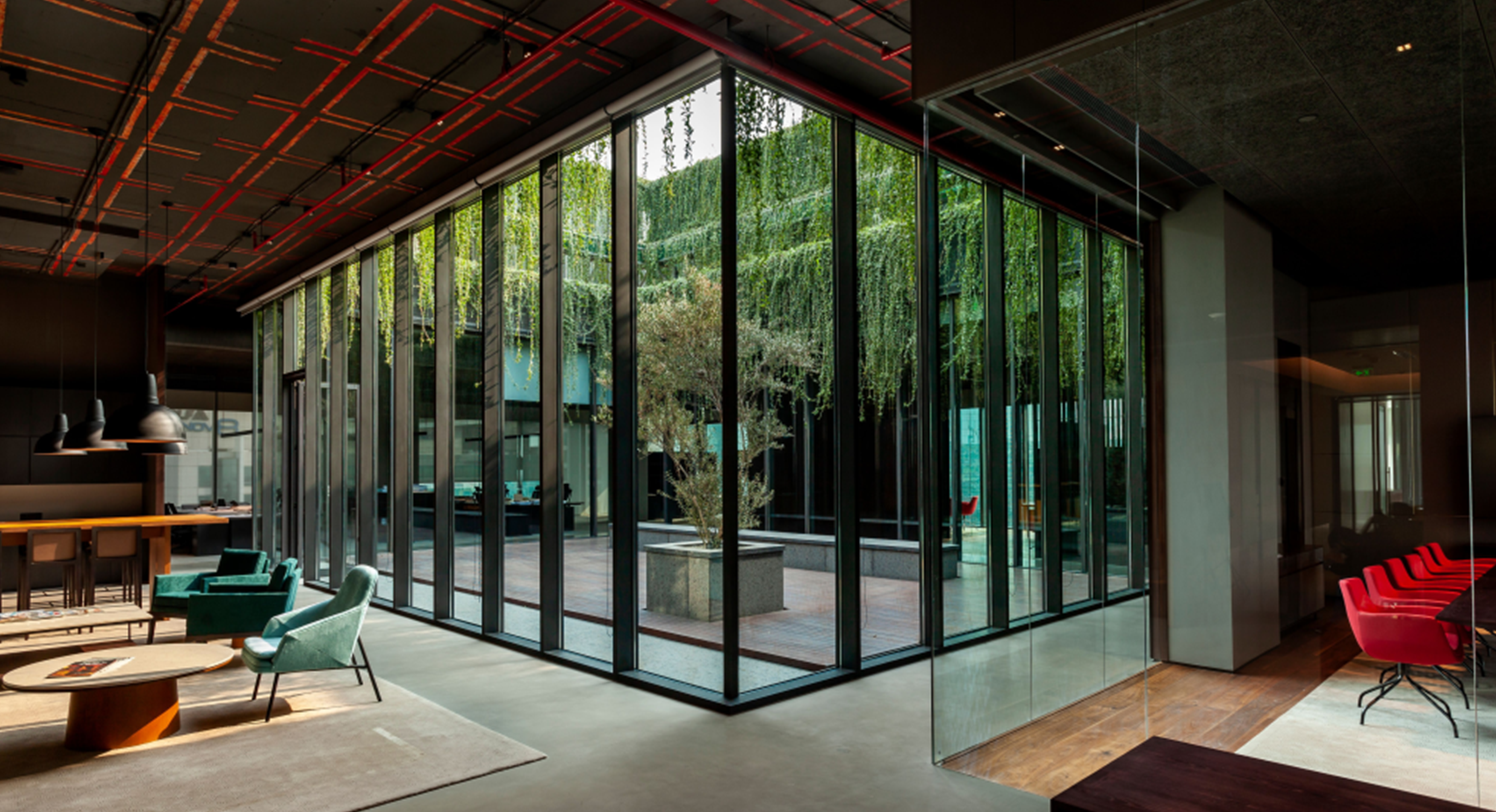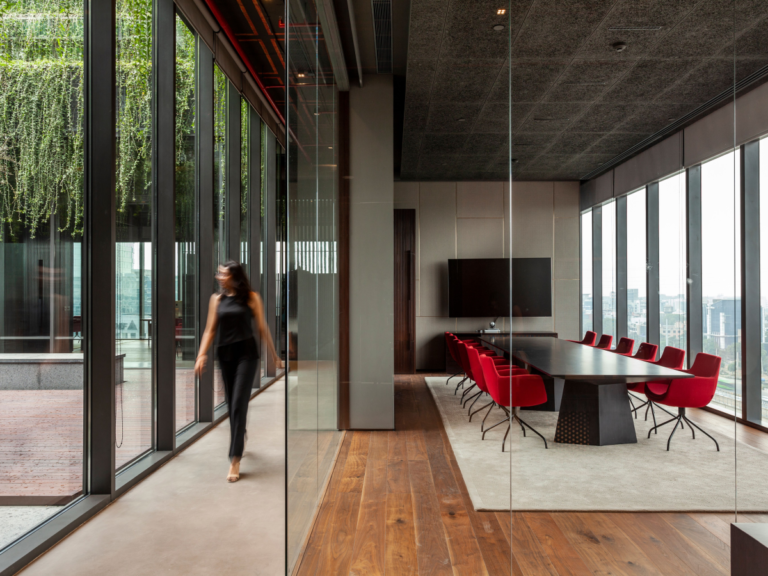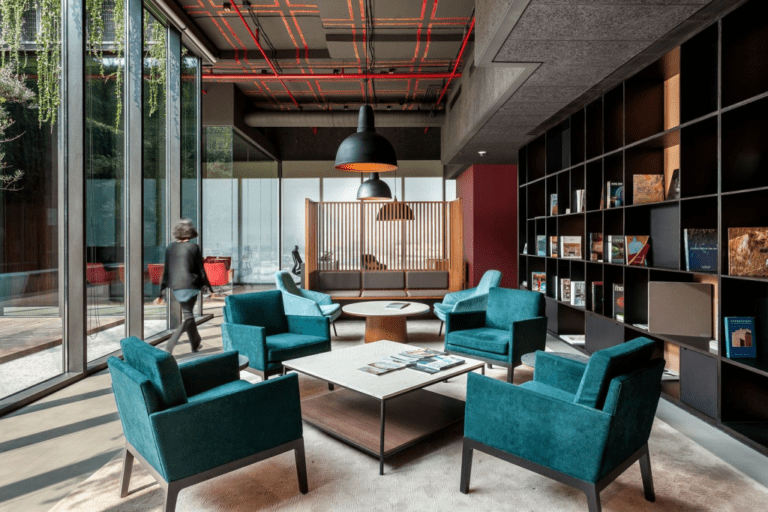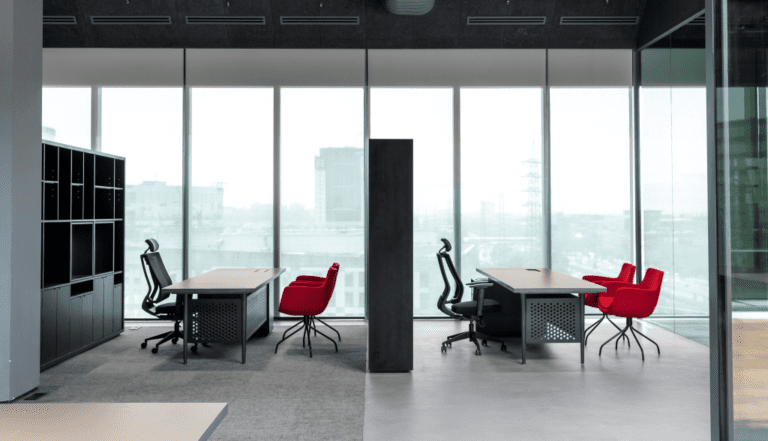
Our built environments have a significant impact on our well-being and health. This is especially true in the case of workspaces, where we invest a substantial amount of time, navigating through stressful situations and continuously adapting to the changing social and technical aspects surrounding work. It is, therefore, crucial to thoughtfully design office spaces that focus on the overall health and well-being of the users to boost productivity. There are numerous ways to achieve this.

Breaking down hierarchies and creating positive environments
Design has the potential to create spaces that emulate order and clarity. Thoughtful workspace design must stray away from reinforcing hierarchy and disconnection. Instead, open-plan spaces that encourage transparency, collaboration, growth, and cross-engagement must be opted for to contribute to a work culture that incentivises creativity and motivation
Inclusion of breakout spaces
Intimate, personal breakout spaces help craft environments that do not seem overwhelming and allow the user to decompress. On the other hand, community breakout spaces can be designed in the form of stepped seating or a larger interactive zone that can be easily reconfigured to host events and team-building activities.
Incorporating open, landscaped spill-out spaces can serve as a great way to aid interaction while also bringing in a sense of calmness and relief in a workspace. Moreover, they also create a setting that fosters collaboration and community.

Revitalising spaces through flexibility
An open-plan workspace is more relevant in the current era—it ensures maximum flexibility so that spaces can be used for multiple activities in the short term and offer the possibility of a variety of long-term uses. When furnished with modular furniture that is composed of a kit-of-parts strategy, workspaces that prioritise agility and reconfigurability emerge. The change in layout also creates a dynamic environment that eliminates monotony and lethargy.

Integration of smart technology to promote convenience and efficiency
Functionality is the driving factor for the design of any workspace. To facilitate productivity, the design must seamlessly merge state-of-the-art technology like Bluetooth or Wi-Fi networks and smart boards. Intelligent lighting systems that are capable of sensing ambient stimulants can adjust themselves accordingly to meet the desired comfort levels for the users.
A combination of high-performance glass and heat-reflective blinds can not only modulate and control the heat gain in the building but also reduce glare in the interiors.

Access to natural light and greens
The ingress of ample natural light is one way to improve the quality of space dramatically. Access to pleasant views and green surroundings also bring a sense of openness and tranquillity in the workspace. Courtyards cater to both these aspects by establishing an indoor-outdoor connection and providing access to pleasant vistas, enabling users to think clearly and work efficiently.